Gender Roles + Indian Diaspora
Comparing & contrasting the films Bride & Prejudice + Bend it like Beckham
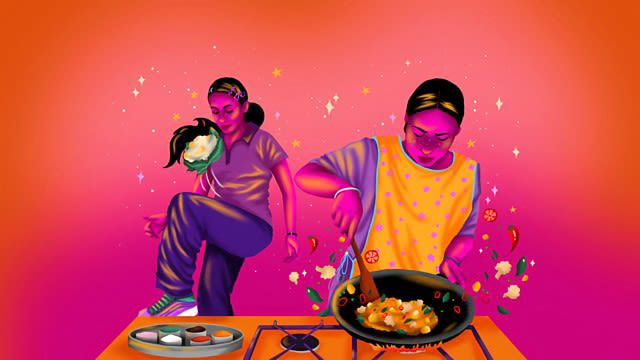
The rich and diverse culture of India shines a spotlight on the evolving platform of gender roles, the two films Bend It Like Beckham and Bride and Prejudice show the complex interplay between tradition and modernisation of gender roles within Indian culture.
India is seen to be a patriarchal country, where men were supposed to be the ‘breadwinners’ and women were given household chores. Historically Indian gender roles have been strongly ingrained within Indian culture. Women were often forced to put their families and marriages above their aspirations, however, there have been noticeable changes in these gender dynamics over time. Some Indian communities still adhere to these conventional gender roles, however, women are now more likely to attend university and work, women's rights are now more protected by law, and advocates for gender equality are more prevalent throughout India. As seen in the report to the right, the results show that men are often seen as the ones in the family to make money and that women should take care of children. The other survey taken showed that there was an overwhelming 'completely agree' response to the question of whether wives should obey their husbands, 64% of Indians completely agreed and 24% mostly agreed with the statement.
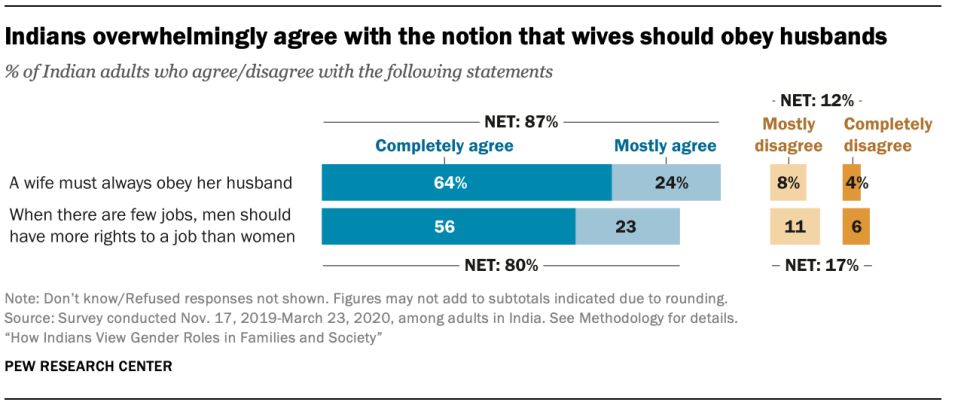
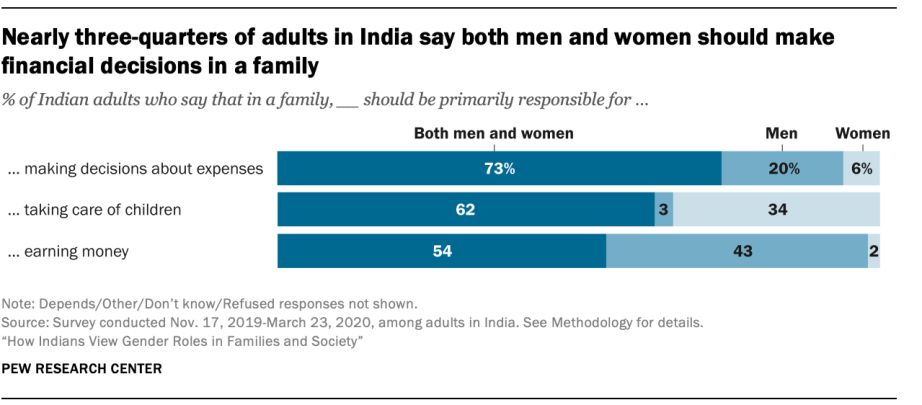
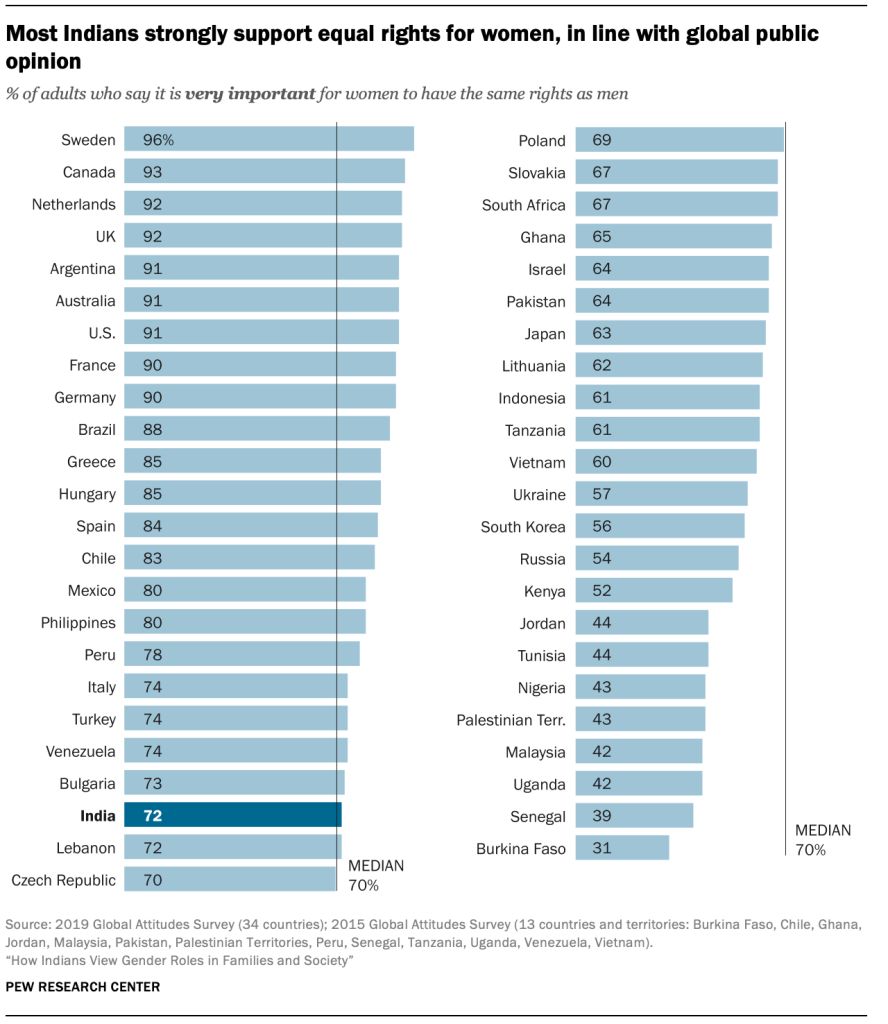
BEND IT LIKE BECKHAM PLOT
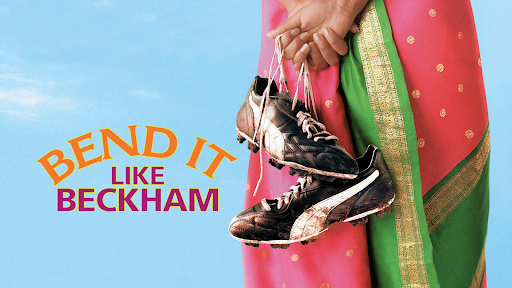
Bend It Like Beckham is about Jess Bhamra, a young British/Indian woman who is divided between her passion for soccer and the traditional expectations of her Punjabi Sikh family, more specifically her mother, Mrs. Bhamra. The film, directed by Gurinder Chadha, explores and challenges traditional gender roles, all the while following Jess's struggle to play women's football against the desires of her own family. The film examines the complications of friendship, love and Jess's struggle for acceptance from her family.
BRIDE & PREJUDICE PLOT
Gurinda Chadha’s 2004 film Bride & Prejudice (the film adaptation of Jane Austen’s Pride & Prejudice) was what many people would describe as an ‘iconic’ piece of media that pioneered and led the way for more ‘Bollywood meets Hollywood’ projects. It features famous former Miss World 1994 and Bollywood actress Aishwarya Rai Bachchan as young Lalita, living in Amritsar, India with her parents and three sisters- Jaya, Maya, and Lakhi. The film also follows British-Indian Barrister Balraj and his sister Kiran, along with their quiet, yet charming American friend Will Darcy. A marriage between Lalita’s best friend and a rich Indian man brings the entire town of Amritsar together- and also makes room for new relationships to form- Balraj and Jaya, and Will and Lalita. Throughout the film- we see a mix of Bollywood film aspects as well as Hollywood levels of drama as they convey a love story filled with cultural misunderstanding, acceptance, and gender roles within a typical Indian household- and the Indian diaspora in a fast-changing world.
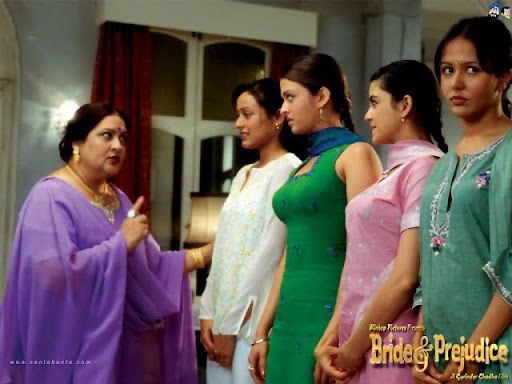
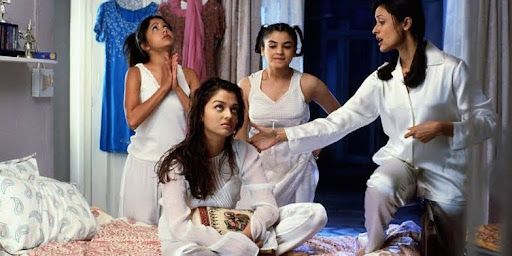
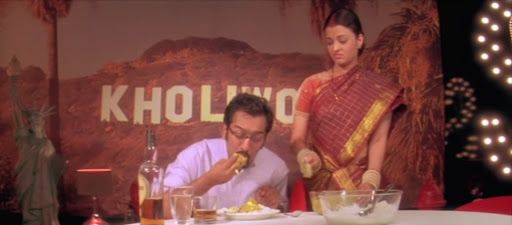


At the start of the film the main cast is introduced and the core relationships are established almost immediately- the quirky Bakshi family, the pristine Barrister Balraj and his sister Kiran and their friend, the quiet Will Darcy. The relationships we want to focus on the most are Mr. & Mrs. Bakshi and their contrasting relationships with their daughters and how they show the concept of gender roles within Indian families. Audiences can quickly see that Mrs. Bakshi is trying to marry off her daughters one by one, from oldest to youngest. She is seen frantically guiding Jaya and Lalita towards potential grooms (Balraj and Mr. Kholi) in her desperate attempts to pull their family out of poverty and into high societal financial stability. She displays obvious dismay whenever she clashes heads with Lalita while discussing marriage- this is because while Mrs. Bakshi is very traditional and prefers for her children to find suitable, rich husbands for practical purposes, Lalita would rather marry for love- when she is finally ready to settle down. This dynamic is shown especially in the scene after Lalita turns down Mr. Kholi’s marriage proposal where we see an angry Mrs. Bakshi, scolding Lalita for turning down the opportunity to bring great fortune to their family- “…she is happy to let us all be ruined…” Mrs. Bakshi also tries to get her husband to share in her disappointment towards their daughter but inevitably fails. From this scene we can dissect that, in Indian culture- it is the woman’s duty to leave behind personal goals and aspirations and take on the role of the house/trophy wife to a rich and or successful man. We also see how this gender role affects women as they grow older- we see this through how passionate and lively Lalita is when she talks about politics, social issues, and career ambitions- in comparison to her mother whose sole focus is to live a luxurious life, free of working and financial hardship. It is almost as if Mrs. Bakshi is a watered down version of her daughter after having it ingrained in her from a young age what a woman should and shouldn’t do. In Anna Pernille Torvik’s 2008 essay Bride and Prejudice: A Feminist Perspective, she describes Chanda’s take on Lalita’s character, saying “Chadha brings forth the playful, strong and opinionated Lalita as lively and true…At the same time, Lalita has her opinions on how she wishes to be treated like a man’s equal in every aspect.” (page, 27) She also talks about the scene between Lalita and her parents saying “Lalita’s refusal of Mr. Kholi comes as a shock to Mrs. Bakshi who sees no fault in Mr. Kholi. He has met all her requirements for a suitable suitor for her daughter both financially and in his connections. When complaining to Mr. Bakshi she reminds him about the lack of love when they got married, and how she feels the love between them has grown afterwards. This she feels should be enough for her daughters to take heed of before entering into a marriage. “Marriage comes first then love grows”, she proclaims. She is outraged and shocked by her daughter’s modern ideas on love and marriage and vows never to speak to Lalita again if she continues to refuse Mr. Kholi.” Of course when talking about the defiant Lalita- we can also look at her best friend Chandra Lamba, who Mr. Kholi ends up marrying. Initially, the union confuses Lalita, however- Chandra eventually talks to her saying “I’m not romantic like you Lalita. I didn’t want to take the chance in case my prince never came. I know he’s not for you but he’s kind and adores me- and I love it here.” From this scene, audiences realize Chandra isn’t as ambitious and romantic as Lalita and that she did not want to miss her chance at living a good, stable life, however it does not diminish her value in society. Torvik talks about this in her essay when discussing the reality of Indian women and the sacrifices they have to make to survive- she states “Chandra who becomes his wife shocks her friend by her choice though she only does what is normal for a woman in her position. Chandra’s role is important when looking at women’s place in Indian society…she shows the dilemma that Indian women have to live with even in a modern society.”(page, 9)
In Bend It Like Beckham there is a clash between traditional cultural expectations and Jess’s individuality, this is one of the central themes. Jess's mother, Mrs. Bhamra, holds herself and her daughters to traditional gender roles; she expects that Jess will help with household chores, cook traditional Indian meals, and eventually settle down with a man of her parent's choosing. This is portrayed when Jess is asked to prepare dinner for guests instead of pursuing her passion for soccer, this scene shows the reinforcement of traditional gender roles imposed on her. An article from The Sunday Guardian expresses the need to shut down this traditional idea of women being the caretakers within Indian families. The hashtag ‘#RasodeMeinMardHai’ was created to diminish this conventional idea. Bollywood actor Pankaj Tripathi mentions in this article that “Functional beliefs about the basic social category of genders like men are the breadwinners and women are the caretakers, are threaded into our daily fabric. These topics are nuanced and complex, but they need an immediate mindset change, a sustained and systemic one. And that’s what the #RasodeMeinMardHai social initiative pushes. It weaves a different story and promotes a sense of responsibility in men towards the kitchen. Lending my voice to the initiative to shape a new narrative and smash the preconceived notion that women must shoulder all kitchen duties,” This directly shows that the functional beliefs of traditional Indian families are in desperate need of a change of mindset, emphasizing the idea of men taking on household chores that are seen to be exclusively for the women to do.
Jess’s desire to play soccer creates tension in the family when her sister has an arranged marriage, this creates tension because her sister is reinforcing the traditional gender roles and highlights the idea of arranged marriages and the expectation that women should prioritize family over their desires. Jess's dream is freedom and independence, she secretly joins a women's soccer team to chase these dreams and defy these expected gender roles. We can see how important this is for Jess as she sneaks out to practice and engages in soccer games. Mrs. Bhamra initially didn't agree with Jess’s vision for soccer as she feared that it would jeopardize Jess’s chances of finding a suitable husband and achieving Jess's traditional role within the family, "What family will want a daughter-in-law who can run around kicking football all day but can't make round chapattis? Now exams are over, I want you to learn full Punjabi dinner, meat and vegetarian." Mrs. Bhamra initially opposes Jess's soccer involvement, however, as the movie progresses it showcases Mrs. Bhamra and her husband's journey of acceptance. When Mrs. Bhamra allows Jess to wear soccer shorts in public without objecting, this shows her acceptance of Jess's desire to leave behind conventional Indian traditions.
Gurinder Chadha the director of both films, sat down with ET Canada and discussed how the movie isn't about a girl whose parents won't let her play soccer, she says that it is more about racism and how the first-generation Indians have suffered from the Indian diaspora and how they are struggling to hold onto their traditions.
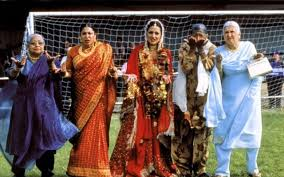


Although Bend It Like Beckham and Bride and Prejudice are similar films, they offer different perspectives on gender roles, and they both investigate the cultural differences between India and western nations. In Bend It Like Beckham, Jess challenges traditional gender roles within her Punjabi Sikh family by pursuing soccer in the UK. This film explores the clash between modern ideas and cultural expectations for Indian women. Bride and Prejudice however, explores gender roles within the idea of arranged marriages and cultural differences between India and the United States. Both films have themes of women striving for independence against cultural and societal expectations and the significant role of family. The films highlight the evolving dynamics of gender roles and the influence of cultural expectations in different settings around the world Gender roles within Indian culture have been both challenged and reinforced in today’s world and this is shown in both films; Jess challenges the gender roles through pursuing a career in sports, away from the domesticated role that Indian women normally take on. Meanwhile, Bride and Prejudice reinforces the ideology that Indian women have to make sacrifices in order to do what’s right for the family in the long run, in terms of financial stability and their status within society.
